Key takeaways
- Portland’s writers community fosters a supportive and inclusive environment that encourages collaboration over competition, enhancing creative growth.
- Non-fiction writing relies on honesty, clarity, and invites curiosity, aiming to engage readers deeply in the narrative.
- The Portland Art Museum serves as a vital source of inspiration, bridging visual storytelling with written narratives and provoking thoughtful exploration of themes.
- Local writers in Portland share constructive feedback and resources, creating a community atmosphere that nurtures personal and professional development.
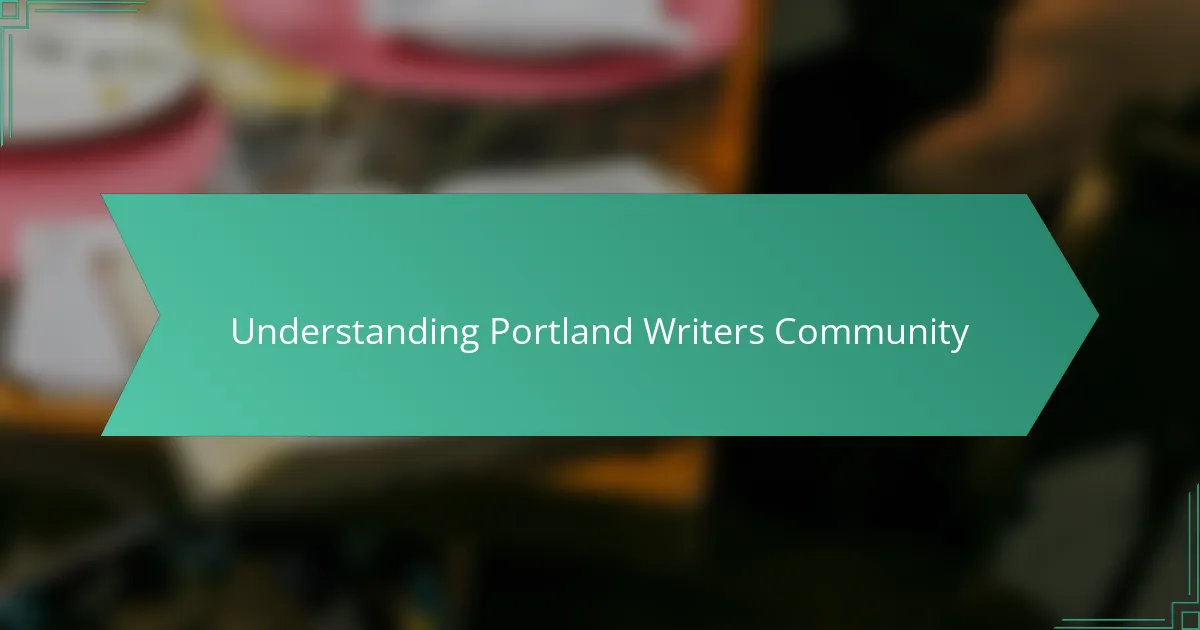
Understanding Portland Writers Community
Portland’s writers community is unlike any other I’ve encountered—it’s a vibrant mix of voices that thrive on collaboration rather than competition. Have you ever felt that electric buzz when you walk into a room full of people who just get your passion for words? That sense of belonging has been a game-changer for my own creative growth.
One thing that struck me early on is how inclusive and supportive this community is. Even as a newcomer, I found myself welcomed with open arms and honest feedback, which made me question: why don’t more literary circles foster this kind of environment? It’s clear that here, the focus is on nurturing each other’s stories rather than guarding one’s own.
What truly defines Portland writers is their willingness to experiment and cross genres, reflecting the city’s eclectic spirit. Does your hometown inspire your writing this deeply? For me, being part of this community has pushed me to explore non-fiction in ways I never imagined, all while surrounded by people who believe stories can change lives.
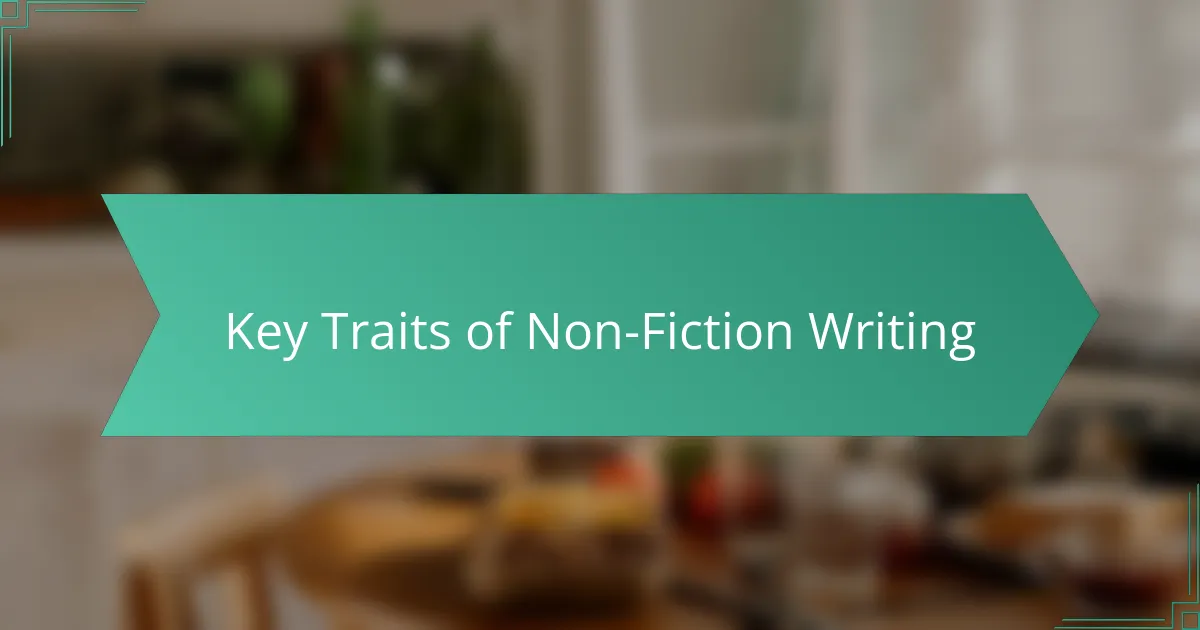
Key Traits of Non-Fiction Writing
Non-fiction writing demands honesty in a way fiction doesn’t—it’s about revealing truth without losing the reader’s trust. Have you ever noticed how a well-crafted non-fiction piece makes you feel like you’re walking alongside the author, discovering something real together? That sense of transparency is what I strive for every time I put pen to paper.
Clarity is another trait I can’t overstate. Non-fiction has to communicate ideas clearly and directly, even when the topics get complex. I remember struggling to explain a complicated art installation at the Portland Art Museum, and only when I stripped my language down to essentials did the story start to sing.
Lastly, good non-fiction invites curiosity. I like to think of it as a conversation—posing questions, offering insights, and encouraging readers to think deeper. When I write about my experiences here, I try to spark that same inquisitiveness I felt walking those museum halls, hoping readers join me on that journey of discovery.

Role of Portland Art Museum in Writing
The Portland Art Museum isn’t just a place to admire art; for me, it became a wellspring of inspiration that shaped my non-fiction writing. Have you ever wandered through a gallery and felt your thoughts shift, as if the artwork was speaking directly to your own stories? That’s exactly what happened during my visits—each piece sparked new questions and reflections I hadn’t considered before.
What makes the museum’s role so powerful is how it bridges visual storytelling with the written word. I found myself drawing parallels between the museum’s exhibits and the themes I wanted to explore in my writing. It wasn’t just about describing what I saw, but about capturing the emotions and histories behind those images, which deepened the honesty and clarity in my work.
Sometimes, I’d sit in one of the quiet rooms, notebook in hand, letting the atmosphere guide my thoughts. Those moments taught me to slow down and really listen—not just to the art, but to my own voice trying to find its place amid the exhibits. Have you ever experienced that stillness where ideas seem to flow effortlessly? That’s the kind of creative space the Portland Art Museum helped me discover.
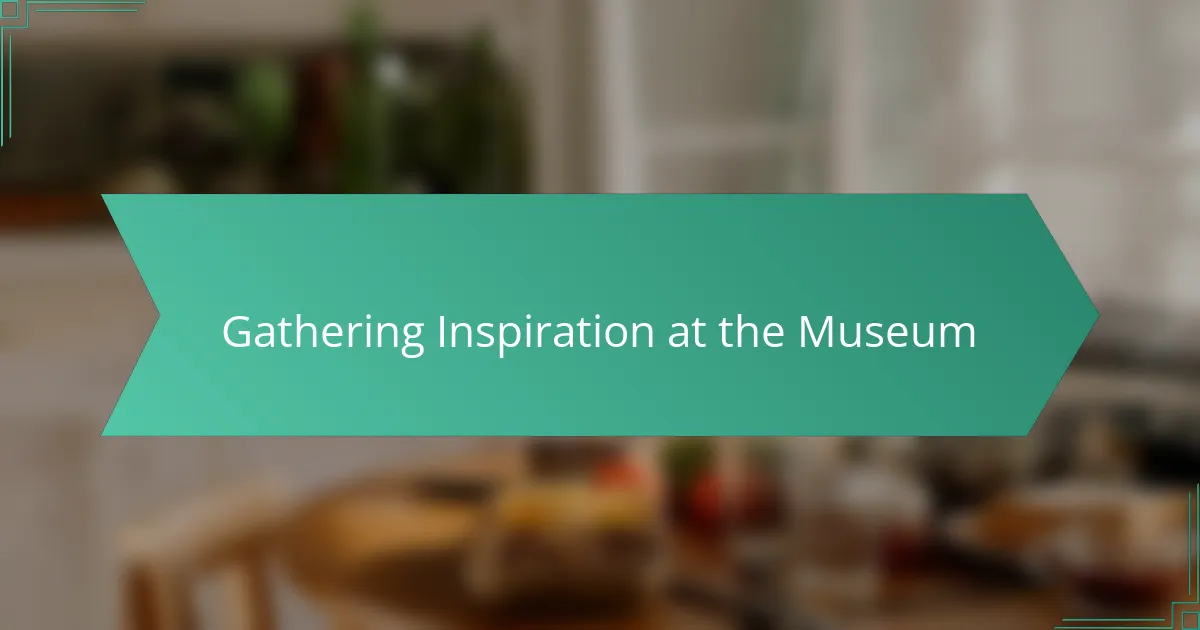
Gathering Inspiration at the Museum
Walking through the museum, I often found myself caught in unexpected moments of clarity—like when a single brushstroke or sculpture detail would trigger a memory or a new angle for my story. Have you ever felt that sudden spark that turns passive observation into personal revelation? That’s the kind of inspiration the museum generously offers if you’re willing to pause and absorb it.
There’s something about being surrounded by so many different narratives in one space that makes me reflect on my own story in richer ways. I remember sitting on a bench near a contemporary exhibit, letting the contrast between the old and new ignite questions about time and change in my writing. It felt like the museum itself was inviting me to weave its layered histories into my non-fiction.
In those quiet corners, I learned to listen—not just to the art, but to the emotions stirring inside me. It reminded me that inspiration isn’t always loud or sudden; sometimes it’s a gentle pull, encouraging me to explore deeper truths through words. Have you ever experienced that subtle nudge that makes your writing feel more alive? For me, the Portland Art Museum was that nudge.
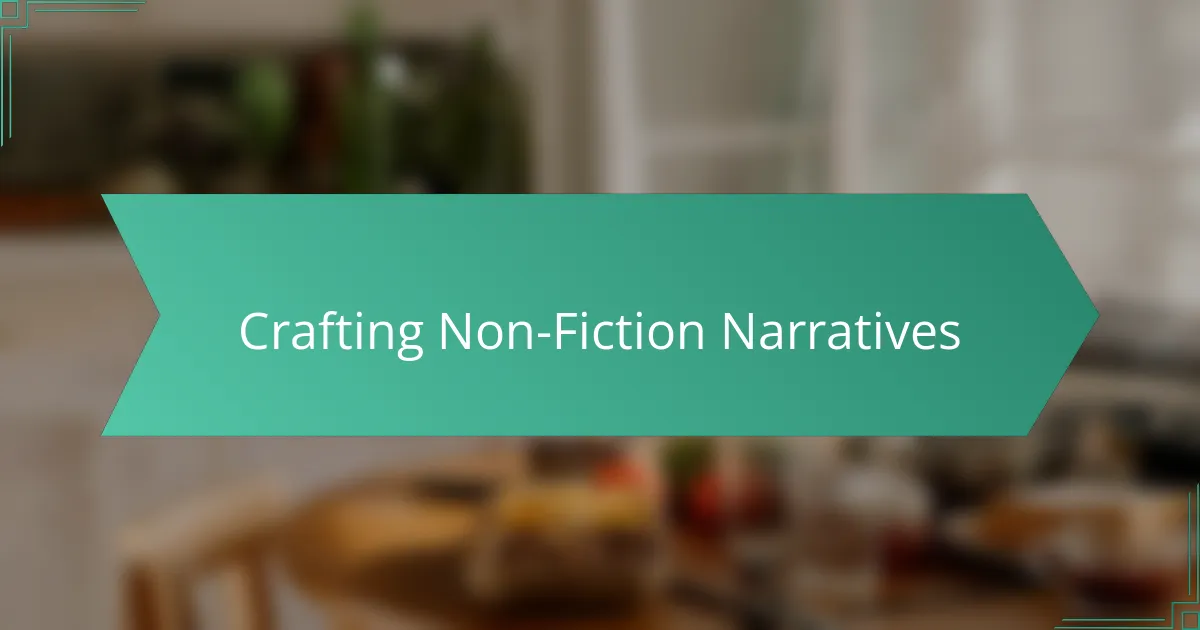
Crafting Non-Fiction Narratives
Crafting non-fiction narratives is, in many ways, a careful balancing act between fact and feeling. I’ve found that grounding a story in truthful detail doesn’t mean losing the emotional thread that connects readers to the material. Have you noticed how the most compelling non-fiction pieces make you feel as if you’re uncovering a secret alongside the author? That’s the magic I aim to capture when writing.
I also believe that every non-fiction narrative benefits from a strong sense of structure, much like the way exhibits are curated at the Portland Art Museum. Each part needs to build naturally on what came before, guiding the reader through layers of insight and information without ever feeling overwhelming. I remember revising drafts until the rhythm felt intuitive—almost like walking through a thoughtfully arranged gallery, where each step reveals something new.
Ultimately, non-fiction storytelling is about inviting readers into an experience, not just relaying facts. When I write, I try to embed questions that encouraged me during my own explorations. For instance, while reflecting on a piece at the museum, I wondered: how does this art speak to memory or identity? Exploring those questions helped me create narratives that resonate on a deeper, more human level.
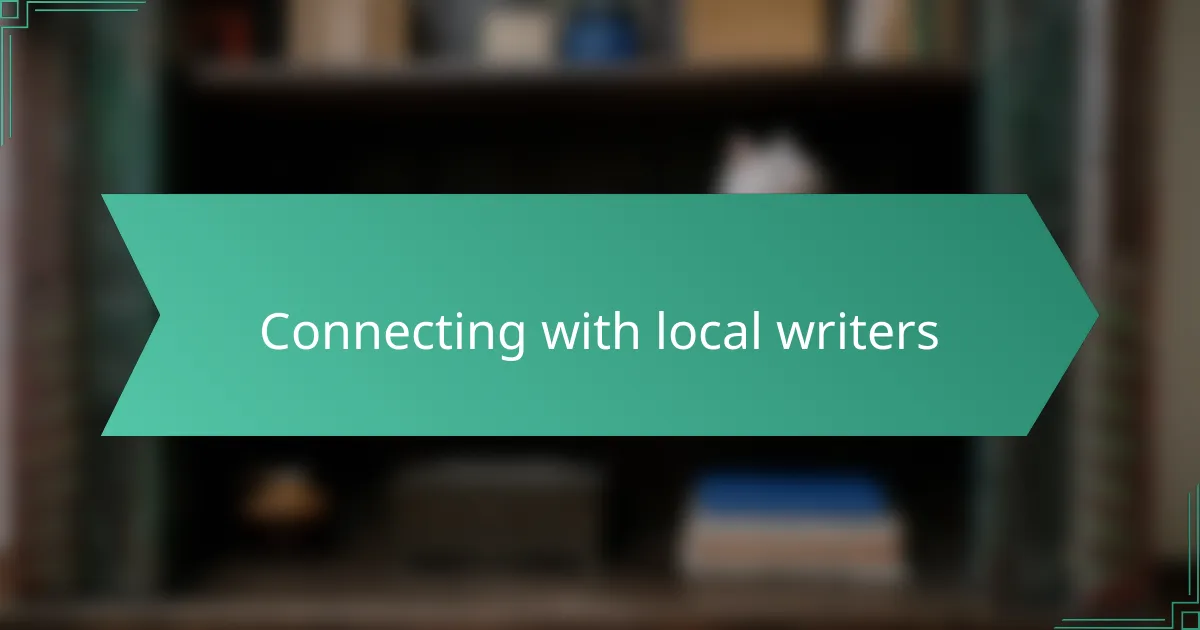
Connecting with Local Writers
Connecting with local writers in Portland felt like joining a long conversation I’d only just discovered. Have you ever walked into a room and immediately sensed a creative energy that pulls you in? That’s exactly what happened when I attended my first local writers’ meetup—suddenly, I wasn’t alone in my struggles or triumphs.
One moment stands out for me: during a small group critique, a fellow writer’s candid feedback helped me see my work from a fresh angle. Isn’t that kind of honest exchange what every writer secretly craves? It reminded me how invaluable these local connections are—not just for improving craft but for building confidence.
What’s unique here is how Portland’s writers actively lift each other up, sharing resources, events, and even their own doubts. This collective spirit made me realize that writing doesn’t have to be a solitary journey. Have you found that kind of support in your own community? For me, it’s been a vital source of inspiration and growth.
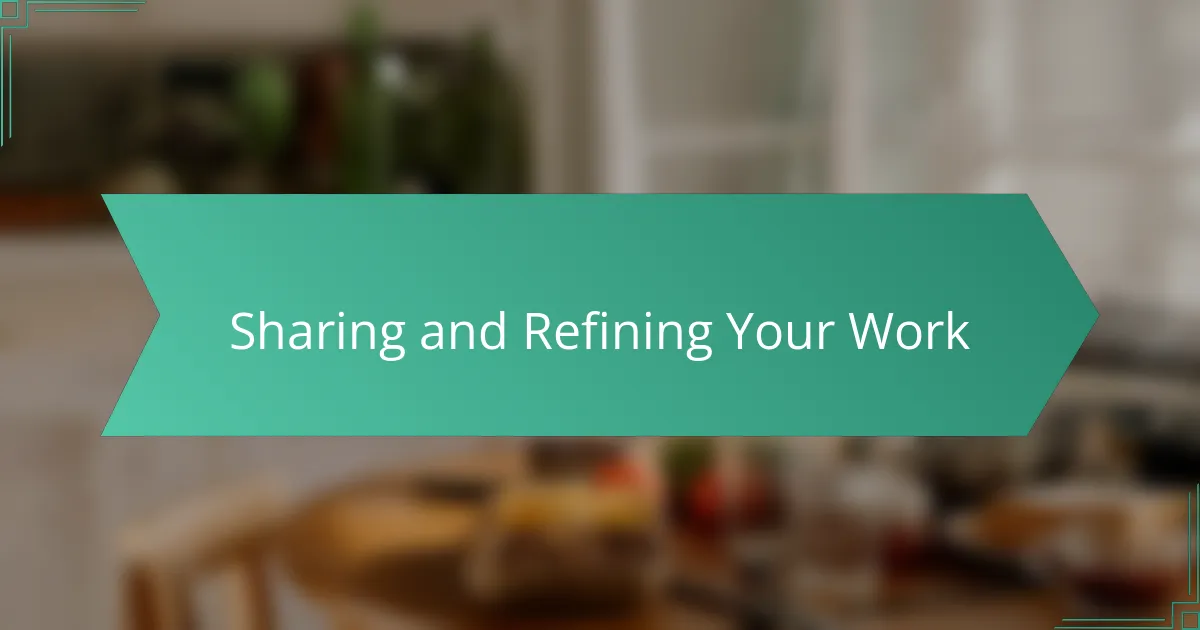
Sharing and Refining Your Work
Sharing my drafts with trusted members of the Portland writers community has been transformative. Have you ever hesitated to show your work, fearing judgment? I have, but the honest, constructive feedback I received here turned my doubts into new ideas. It’s like having a sounding board that helps you hear your story clearer.
Refining non-fiction is a process of peeling back layers, and that only happens when you let others in. I once shared a piece inspired by a museum visit that felt too scattered, but through thoughtful critique, I learned to sharpen my focus and deepen the emotional core. Doesn’t it feel rewarding when something you’ve poured yourself into suddenly gains clarity?
What really stands out to me is how this community celebrates revision as part of storytelling, not a sign of failure. The willingness to revisit and reshape a narrative without losing your original voice is a skill I’ve honed here. Have you experienced that moment where a fresh perspective makes your writing come alive again? It’s those moments that keep me returning, eager to share and evolve my work.